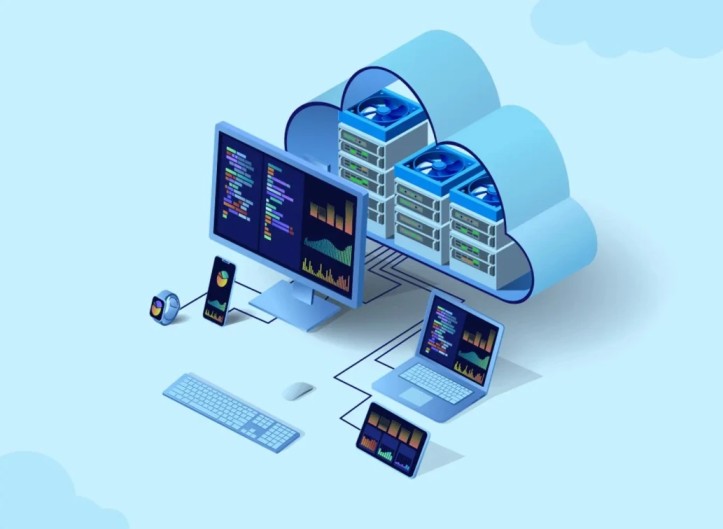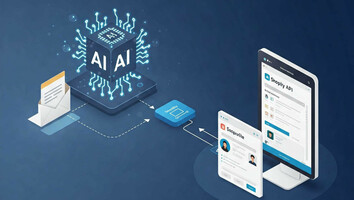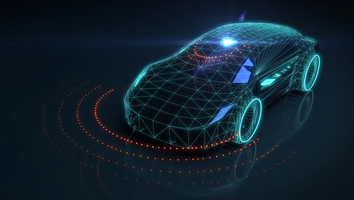It is true that Covid has brought a significant change in cloud computing. After conducting a survey with 34% of companies, it was noticed that cloud computing has become much higher than planned after Covid.
It is the cloud computing statistics for 2023 that tell us that more than 30% of SMBs are using cloud computing, which was not planned initially. This number is higher than the expectations according to 52% and the reason for this is that people were doing work from home during the pandemic. For the last so many years it has been noticed that the dynamic socio-economic environment has made a remarkable impact on cloud adoption. Digital transformation has been accelerated by companies because of the pandemic and work from home option.
Statistics and Predictions of Cloud Computing 2023
It is worth mentioning that Gartner, Inc. predicts that the worldwide public cloud spending will grow by 20.7% to a total of $591.8 billion in the year 2023 from the total of $490.3 billion in the year 2022. The massive adoption of cloud services by businesses has been seen during the pandemic and this momentum will continue in 2023 and the upcoming years. A renowned trading platform, StockApps.com has also given its forecast for the public cloud market where it expects that by the year 2023, the size of the public cloud market will surpass the US $500 BN threshold.
The pandemic has compelled companies to embrace cloud platforms for their business by integrating cloud technologies for more flexibility. This makes Gartner further predict that the market for public cloud services in India will rise from 29.6% in 2021 to $7.3 billion by the end of 2022 and much more in 2023.
Market trends of Cloud Computing
Moving to the cloud is no more optional, as the benefits and new capabilities of this technology prove to be vital for moving ahead in this competitive world and uncertain economy. It is the public cloud’s elasticity and scalability that reduces the financial risk of innovation and at the same time encourages business agility when the companies need it.
By 2025, Gartner predicts that the market will spend more/maximum on public cloud services as compared to traditional IT solutions. The global cloud computing market overview shows that by 2027, the market is projected to be valued at USD 1,240.9 billion growing at a CAGR of 17.9% as per the forecast period from the estimated USD 545.8 billion in the year 2022.
Top Ten Cloud Computing Trends 2023
Tracing the cloud computing trends in the year 2023, it is noticed that some of the biggest cloud computing trends are:
- Cloud Native Applications - This application is one of a kind, as the program is designed in a unique way to withstand significant changes while maintaining resilience at the same time. This app is being adopted by a large number of businesses, as it allows companies to create, launch and manage cloud apps quickly. Businesses can continuously change, enhance or add features so that the customers can have a better experience. Managing this app is much simpler, as it involves fewer resources and vendor participation. The cloud-native app also helps organizations to improve their agility, customer focus, and adaptability while being a hub for the modern IT industry. Capgemini has found that 32% of the new enterprise IT apps are cloud native.
- Cloud Security and Resilience - While migrating to the cloud, organizations usually face cyber security threats. Cloud migration offers some benefits, conveniences, and efficiencies with several security risks at the same time. Businesses are the risk of being fined or losing trust among customers, as a result of which investing in cyber security and building resilience will become a priority in the upcoming years. This will become an important and large cloud computing cloud that will emphasize cost-effective ways to maintain cyber security. In 2023, this is subject to expansion by expanding the usage of managed ‘security as a service provider along with AI as well as predictive technologies for the detection of risks before they cause issues.
- Multi-Cloud and Hybrid Cloud - There was a prediction by Gartner that by the end of 2021, 75% of midsize and large organizations would have adopted multi and hybrid cloud deployment. According to the IDC analysis, by 2021 hybrid cloud solution architecture would be chosen by 90% of businesses, making a combination of dedicated private clouds, on-premise, several public clouds, and legacy platforms.
The businesses have now understood that data management involves a combination of a variety of appropriate cloud deployment strategies rather than simply relying on one cloud platform/architecture.
By 2023, businesses will be looking to engage more than one vendor for hybrid or multi-cloud deployment in order to get the best solution. A hybrid cloud architecture provides the ideal combination of private and public clouds dedicated to specific enterprises such as banks, insurance companies, and others. Market trends point to multi and cloud deployment being among the top cloud computing trends in 2023, as well as in the years to come. - Low Code and no-code Cloud service- Nowadays organizations are interested in tools and platforms that allow anyone to create applications while using data to solve problems without writing computer codes. Low-code and no-code solutions provide programs for web applications, website creation, and virtually any other digital product that businesses look for. Entry barriers for companies using AI and ML have seen a drastic fall, which is due to the availability of low-code and no-code solutions. This makes it the cloud computing trend for 2023.
- Edge Computing - It is important to know about edge computing, as in edge computing the data is stored, processed, and analyzed geographically very close to its source. With the ever-growing use of 5G, it is noticed that edge computing applications processing and analyzing data at the network’s edge are expanding day by day. Edge Computing provides better privacy, security, speed, and efficiency while allowing companies to streamline operations, boost performance, automate procedures and enhance digital transformation. By 2023 this would be at the center of any cloud strategy and by 2024 cloud platforms will have a sizable number of distributed cloud services that will operate at the edge. IDC projections say that edge computing’s global market will expand by 12.5% a year from 2024 and reach somewhere around $250 billion.
- The AI and ML-powered cloud - As limited resources are available for businesses to develop their own AI infrastructure, so cloud services for Artificial Intelligence (AI) and Machine Learning (ML) are provided. Cloud service providers make use of AI internally for different purposes like running the enormous, controlling the cooling and electricity systems in data centers, dispersing networks to supply storage resources to clients, and providing cyber security tools for protecting data.
- Cloud Gaming - One of the major advantages of the cloud is the streaming services of Netflix and Shopify that show movies, music, TV shows, and much more. Although streaming of video games is taking some time Microsoft, Nvidia, Amazon, and Sony are still offering the same. One of the major drawbacks of streaming video games is that it requires higher bandwidth than playing music/video. After spending millions of dollars to develop Stadia, Google finally retired it after failing to meet commercial expectations.
But, 2023 can be the cloud gaming year, as the introduction of 5G can lead to fast networking technologies and cloud gaming will become a known industry. Google believes that the technology for Stadia will continue, as the foundation of a B2B game streaming service that is being developed and this will encourage the game developers to offer direct streaming features to their consumers. Lastly, 2023 can be the marking year when everything will come together but only if cloud gaming turns to 5G just the way streaming videos/music turned to 4G and 3G. - Kubernetes - Automation being the latest technology supports the ever-changing ecosystem via means of Kubernetes that offers automation to those who work on cloud networks while moving closer to the world of automation. The best part is that it is an extensible and open-source platform that runs applications from a single source while managing the services and workloads at the same time.
- Blockchain - This technology helps to provide you with a tamper-proof digital ledger, allowing you to record data without being dependent on a centralized authority. It has emerged as a game changer but has faced many issues especially in managing and storing a large amount of data. One of the remarkable trends in cloud computing would be the deployment of blockchains and the parts that make them up, as businesses will keep pushing the boundaries of blockchain to make it a perfect fit.
- Internet of Things -When we talk about cloud computing then IoT is the next upcoming trend. This technology maintains a good connection between networks, servers, and computers while functioning as a mediator to ensure successful communication while assisting in data collection from remote devices to support efficient operations. Other ways are also assisted by this technology including resolving warnings and supporting security protocols for a safer and better cloud environment.
A Quick Wrap Up
Ever since COVID hit us, there is no doubt that cloud computing has been at its height, as we have well adopted it, and this technology will continue to boom in 2023 and the years ahead. Using cloud technology can help organizations to expand their cloud capabilities while upgrading and upscaling their digital products at the same time. Seeing the market trends of 2022 clearly shows that the ‘purpose fit for the cloud’ method has been replaced by the ‘cloud first’ strategy.
Businesses will look for innovation and continual learning that will master the cloud solution but remember that you can only use the best cloud solution in the market if you follow the trends. So, just stop thinking and if you are looking for business continuity, cost reduction, and better future scalability then you must opt for cloud computing without giving it a second thought.



